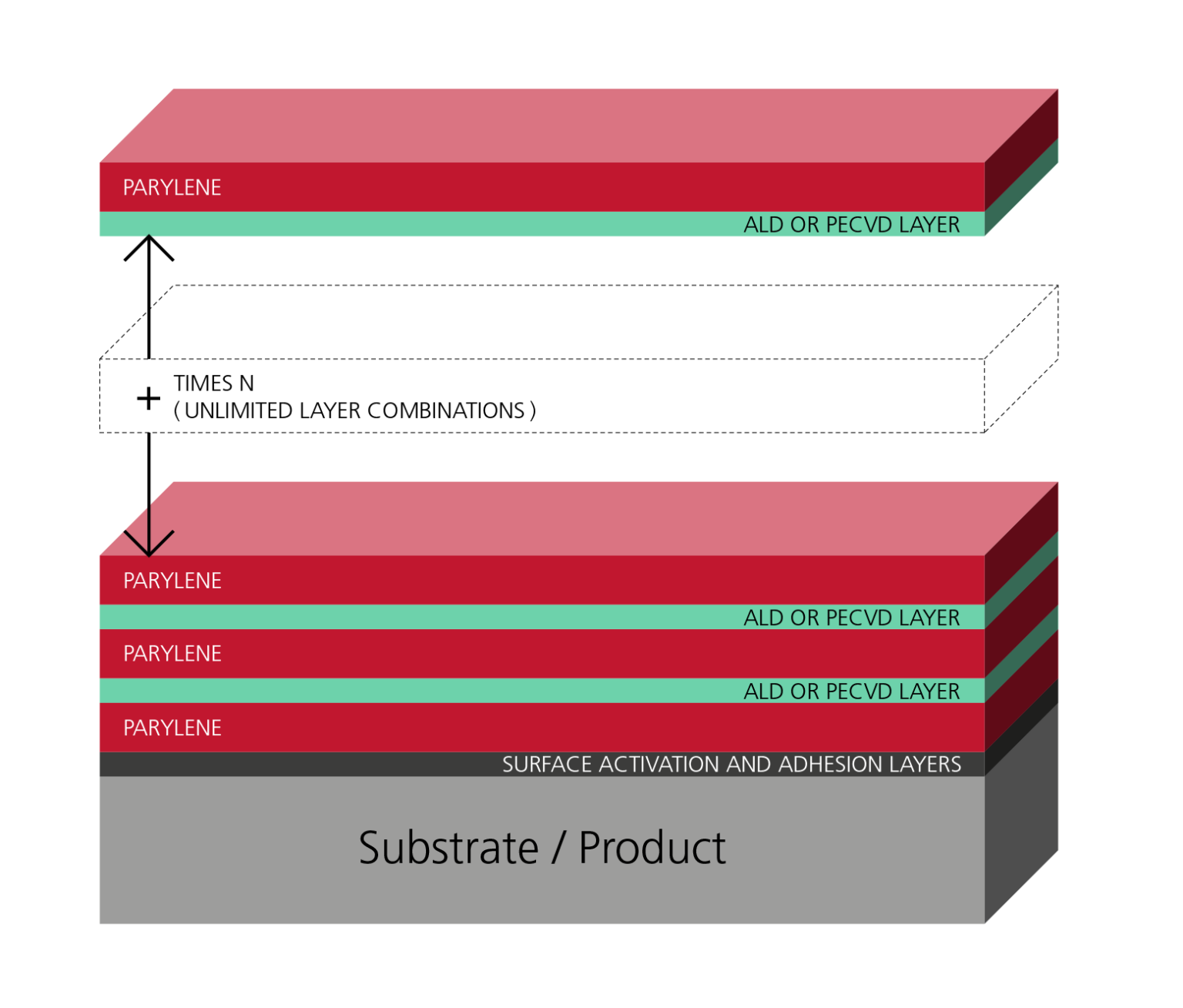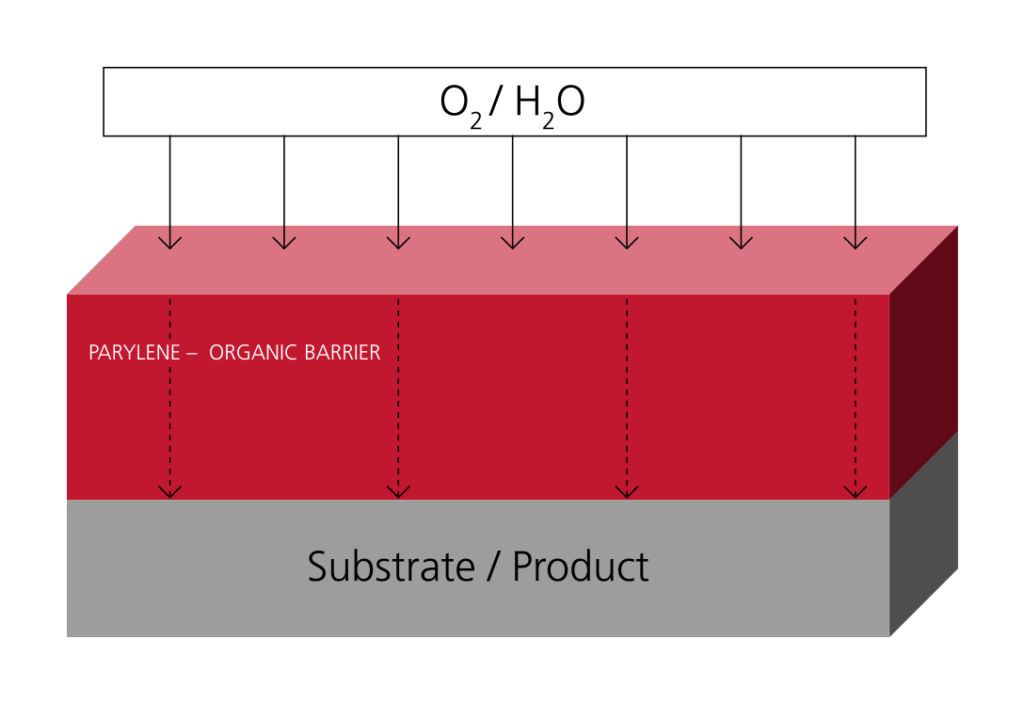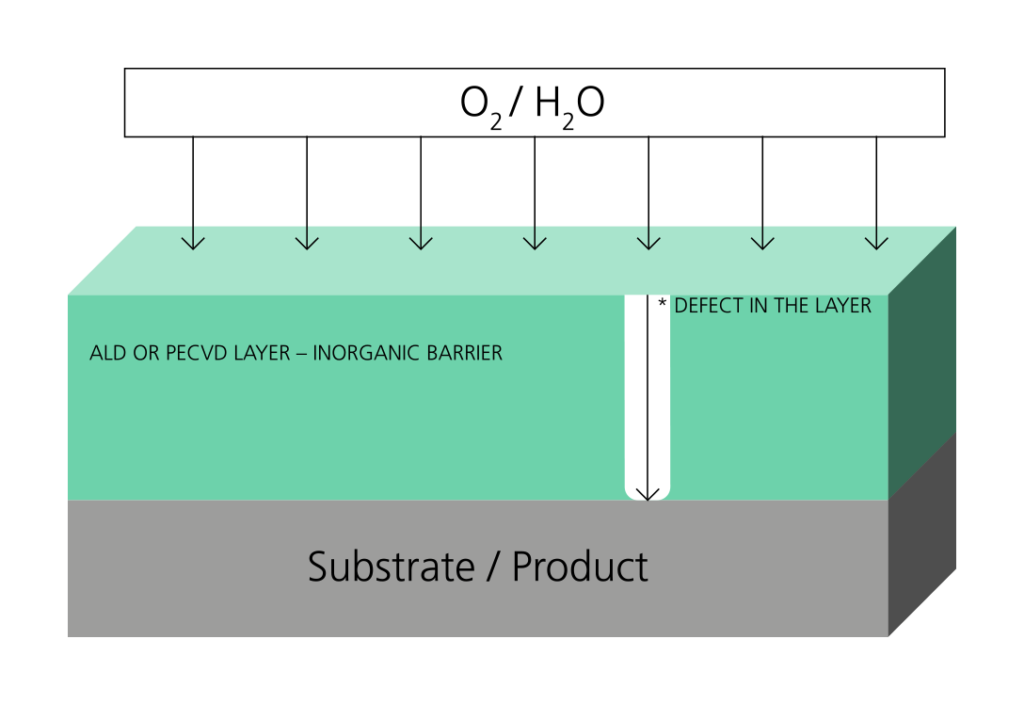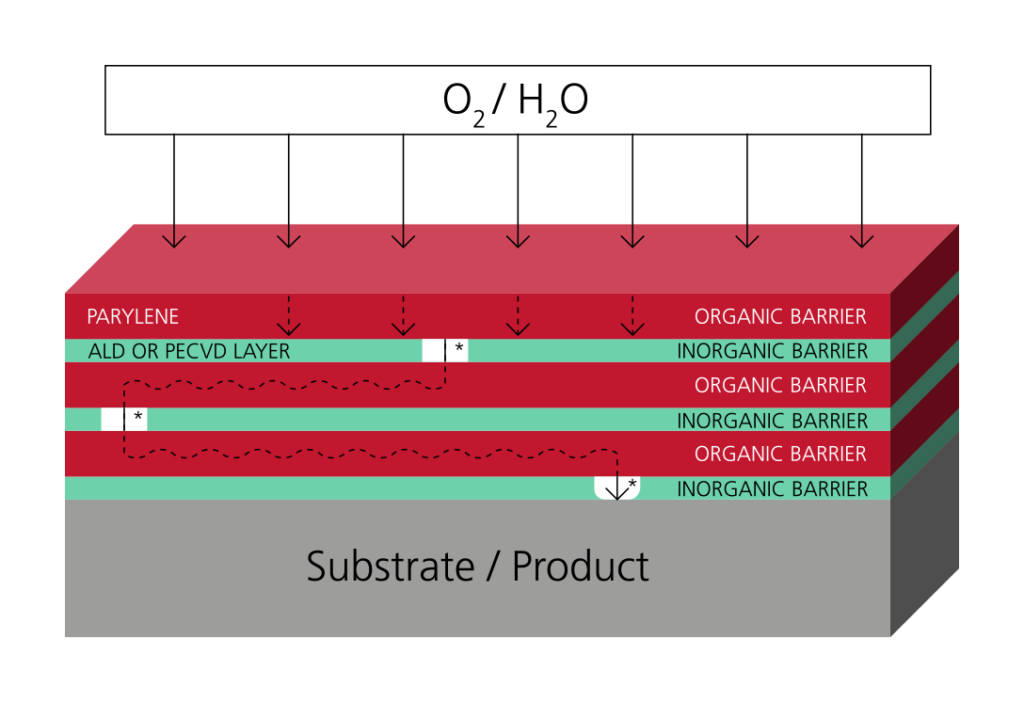MULTILAYERS COATINGS
MULTILAYERS COATINGS
MULTILAYER COATINGS

Multilayer coatings are stacked structures alternating different thin films. In Comelec’s technology is based on the combination of Parylene with inorganic layers, mainly Al2O3, TiO2 and SiO2. Such hybrid (or composite) coatings can be widely tuned to cover a large range of properties. The overall thickness of the multilayer stack is typically in the range of 1 to 10 microns.
The primary role of the multilayer technology developed by Comelec is to provide ultra-barriers enabling encapsulation of high-tech components that are very sensitive to moisture or oxidation. The Comelec technology meets demanding markets, where the thickness/permeability ratio is crucial.
Advanced barrier properties of Parylene-inorganic multilayers rely on the well-known “defect decoupling effect”. While inorganic layers have intrinsic low gas diffusion coefficient, it is in practice very unlikely to deposit such thin films without defects (pinholes, cracks, particles, etc.). Introducing organic layers (Parylene) in between inorganic layers will create a tortuous path between defects and therefore reduce greatly their impact on macroscopic properties.
ORGANIC SINGLE LAYER

INORGANIC SINGLE LAYER

INORGANIC/ORGANIC MULTILAYER

High barrier properties (water vapor and oxygen transmission rates, WVTR / OTR):
Compared to conventional Parylene coatings, that corresponds to barrier improvement factors larger than 1000 !
Outstanding mechanical behavior, high toughness Multilayer coatings:
Excellent chemical / bio – stability:
Comelec Multilayer coatings bring new possibilities for applications that requires advanced encapsulations solutions. It becomes especially essential when protection of products that are miniaturized, mechanically flexible and communicating with their environment must be ensured.
While the highly demanding medical market represents the main potential through the next generation of AIMDs (Active Implantable Medical Devices), the Comelec multilayer coatings also open new doors in many other challenging industrial sectors such as power electronic, sensors, microelectronic, etc.
The process is process is achieved at low temperatures (< 100°C). It is therefore suitable for most heat sensitive components (ICs, polymers, etc.) and it leads to low stress coatings.
Different materials and process features can be obtained from PECVD and ALD (both being sub-class of CVD), offering different tools to satisfy various applications.
ALD is based on 2 or more precursors that sequentially react at the substrate surfaces according to self-limiting chemical reactions. This leads to a very controlled layer growth, “monolayer-by-monolayer”, according to ALD cycles.
This principle leads to perfect conformal coatings which is often mentioned as the main advantage this process, similar to the Parylene process. The Comelec multilayer combining Parylene and ALD therefore offers the perfect solution to coat complex 3D shaped devices with a high aspect ratio.
While ALD films are in most cases grown at relatively high temperatures (> 200°C), Comelec successfully developed a low temperature (<100°C) ALD process that can be achieved in industrial volume reactors.
Comelec’s current Parylene/ALD multilayer technology uses Aluminum Oxide (Al2O3) and Titanium Oxide (TiO2). These materials offer good barrier properties and can be integrated in biocompatible devices.
Other ALD layers are currently being developed to go beyond state-of-the-art performances.
PECVD is based on chemical reactions of precursors enabled by plasma as the energy source. Generating a plasma within the deposition chamber dissociates the precursor gas and allows deposition of thin layers with a wide range of properties. The in-situ plasma source also offers unlimited reaction schemes for any surface engineering purpose.
PECVD is therefore mainly limited to 2D applications (or very simple 3D features). However, this process benefits from high deposition rates and unique layer properties thanks to low temperature plasma chemical reactions.
Comelec’s PECVD process focusses on Silicon Oxide (SiO2) and derivatives (SiOxNyCH) materials. This material family presents tunable barrier and mechanical properties that are quite useful for various applications.



